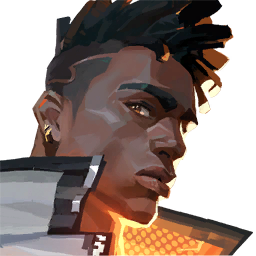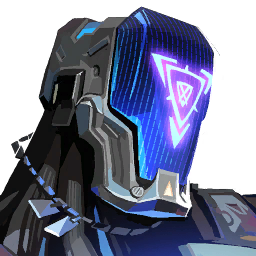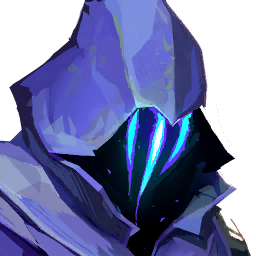At BLIX, we’ve spent countless hours dissecting what really holds players back in Valorant ranked. This isn’t just another checklist of “don’t whiff your shots” or “remember to buy armor.” We’ve gone deeper.
From the surface-level fundamentals to the often-ignored mindset killers, we’ve covered every angle—including specific agents that are easiest to pick up and train for every role, so players don’t have to dig through a thousand guides.
And to drive it home, we’ve included real-match situations that scream, “Yep, that was me.” -and REAL advice from REAL Pro – the only people whose opinions matter. So if it’s rank improvement you’re after, this guide is your tactical timeout.
Contents
Highlights
- Typical mistakes
- Unspoken problems
- Working advice
- Pick to train
- Real pro’s hints
- Additional: FAQ on Ranked
Common Ranked Mistakes
Let’s be honest—everyone and their Radiant coach has covered these. Crosshair placement, bad comms, eco mistakes… it’s Valorant 101. Yet, just because they’re basic doesn’t mean they’re not lethal. Some pitfalls may be basic, but still catch even experienced players off guard (especially when pressure hits.) So we won’t dwell too long here, but will do a once-over nevertheless,
| Mistake | Why It’s a Problem | How to Fix It |
|---|---|---|
| Poor Crosshair Placement | Slower reaction time, missed headshots | Keep it at head level and pre-aim common angles |
| Overextending Without Intel | Leads to solo deaths and lost rounds | Use utility to gather info; push with team coordination |
| Ineffective Communication | Causes confusion and missed trades | Use clear, concise callouts and ping system |
| Ignoring the Economy | Results in uncoordinated buys and weak team rounds | Plan eco rounds and buy with the team |
Unspoken Reasons You’re Still Stuck
This is where it gets spicy. These are the mistakes players rarely talk about because they’re subtle, psychological, or just straight-up uncomfortable to admit. Playing scared, refusing to review games, locking one agent like it’s a security blanket—these are the silent saboteurs of progress. Most players ignore this part of the skill tree, which is exactly why it’s worth unlocking.
| Hidden Mistake | Why It Holds Players Back | Solution |
|---|---|---|
| Playing to Not Lose | Leads to overly passive play and ceding map control | Take calculated risks; assert control when safe |
| One-Tricking Without Flexing | Limits team comp and hurts adaptability | Learn 2–3 agents across different roles |
| No Post-Game Analysis | Allows repeat mistakes to go unchecked | Watch replays, note poor habits, and work on them |
| Weak Mental Game | Tilt leads to impulsive plays and bad decision-making | Take breaks, reset mentally, and detach ego from LP |
How to Actually Improve
Here’s where to pay real attention. Forget vague “just get better” advice—this section is about actionable habits and practice routines that actually move the needle. Improvement in ranked isn’t luck; it’s a build path. And this section gives players the tools to path efficiently—no detours into fantasy land, just grounded, grindable gains.
| Focus Area | Why It Matters | Action Plan |
|---|---|---|
| Deliberate Practice | Builds muscle memory and sharpens core mechanical skills | Use aim trainers and custom maps daily |
| VOD Reviews | Identifies blind spots in decision-making and positioning | Watch replays post-loss; focus on your deaths and rotations |
| Agent Mastery | Boosts decision-making and synergy with team comps | Learn utility timings, matchups, and role-specific duties |
| Map Knowledge | Improves rotations, flanks, and utility usage | Study callouts, spike spots, and common peek angles |
Insights from the Pros
Professional players don’t just out-aim the lobby—they out-think it. One of the biggest takeaways from watching or listening to top-tier talent is how intentional every action is. Whether it’s delaying utility to bait a rotation or holding a deeper angle to punish an overpack, pros are always two steps ahead. Players climbing the ranks should start thinking the same way: stop reacting, start anticipating.
A few practical takeaways? Learn timings—when most teams hit sites, rotate, or default. Vary positioning every few rounds to avoid becoming predictable. Don’t autopilot utility—ask, “What problem does this solve?” before tossing it. And most importantly, review your games like a coach, not a critic—look for patterns, not just mistakes. Improvement starts when the play isn’t just flashy—but functional.
Pool Advice

It’s not just about picking favorites—it’s about building a team that covers all the bases: entry potential, intel gathering, site control, and post-plant utility. That’s exactly why we’ve highlighted popular and easy-to-learn agents for each role. Whether a player is just starting out or looking to branch into new roles, these picks won’t just make individual performance smoother—they’ll also plug seamlessly into most comps. So, instead of clashing with teammates in agent selection, players can come prepared to flex or fill based on what the team needs, not just what they feel like locking in.
Duelist

- Aim Practice: Reyna’s kit relies heavily on securing kills. So, focus on sweetening your aim: deathmatches and aim trainers.
- Ability Usage: Practice using her Leer to blind enemies before peeking. Time your Dismiss and Devour abilities to either escape or sustain in fights.
- Flash Training: Use custom games to practice throwing his Curveball around corners without blinding yourself.
- Self-Sustain: Learn to use Hot Hands and Blaze not just for damage but also for healing.
- Ultimate Usage: Run It Back allows you to enter sites and gather information without the risk of permanently dying.

Initiator

- Lineups: Spend time in custom games learning Recon Bolt and Shock Dart lineups for common spots on each map.
- Drone Usage: Practice piloting the Owl Drone to clear angles and tag enemies safely.
- Ability Suppression: Use ZERO/point to suppress enemy abilities before pushing. Practice throwing it into common holding spots.
- Flash Practice: Work on throwing FLASH/drive in a way that blinds enemies without affecting teammates.
- Ultimate Timing: Use NULL/cmd during team pushes to gain the advantage in fights.

Controller

- Smoke Placement: Learn to place Dark Cover smokes effectively to block enemy vision. Use the minimap to assist with placement.
- Teleportation: Practice using Shrouded Step to reposition quickly and unpredictably.
- Ultimate Use: Use From the Shadows to gather information or create pressure on the map.
- Smoke Lineups: Use his Sky Smoke to block off key sightlines. Practice standard smoke setups for each map.
- Stim Beacon: Place Stim Beacon in areas where your team plans to push to increase their fire rate.
- Ultimate Usage: Use Orbital Strike to clear out entrenched enemies or deny defuses.

Sentinel

- Healing: Prioritize healing teammates with Healing Orb, but don’t forget you can heal yourself in critical situations.
- Barrier Usage: Use Barrier Orb to block enemy paths or boost yourself to unexpected angles.
- Slow Orbs: Place Slow Orbs in choke points to delay enemy pushes.
- Resurrection: Use Resurrection in safe areas to bring back key teammates during rounds.
FAQ
What’s the fastest way to improve in Valorant ranked?
Focused practice on aim, game sense, and communication.
How can I stop tilting after bad games?
Implement post-game routines, take breaks, and focus on learning rather than just winning.
Should I always play meta agents to climb?
Not necessarily; proficiency with an agent often outweighs meta considerations.
How many agents should I learn to climb consistently?
Aim to master 2–3 agents across different roles. This gives flexibility during agent select and helps cover for teammates’ picks without compromising team comp.
Does warm-up really make a difference before ranked matches?
Yes, massively. A 10–15 minute warm-up session sharpens aim, reflexes, and confidence—especially in the first rounds where momentum matters most.



